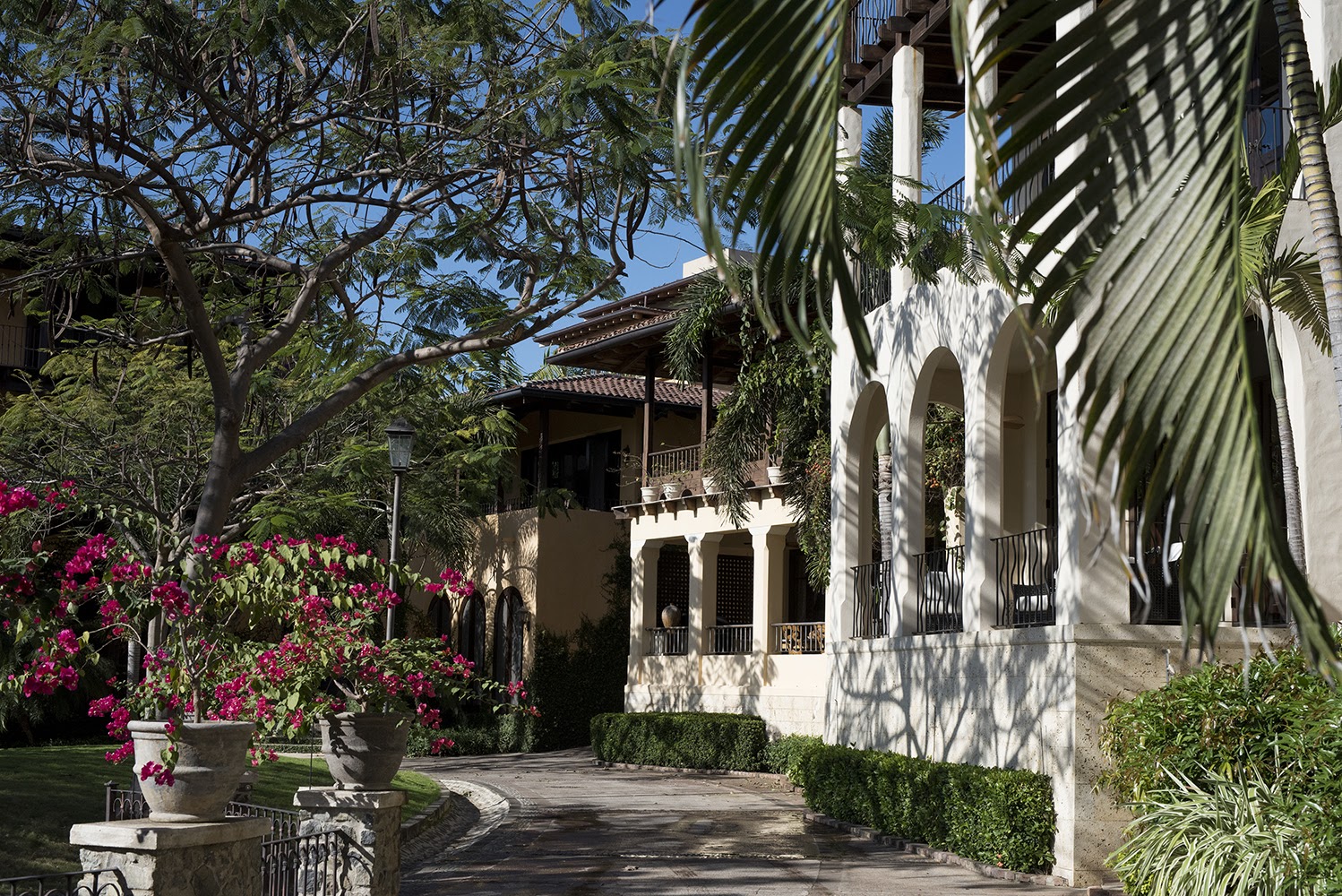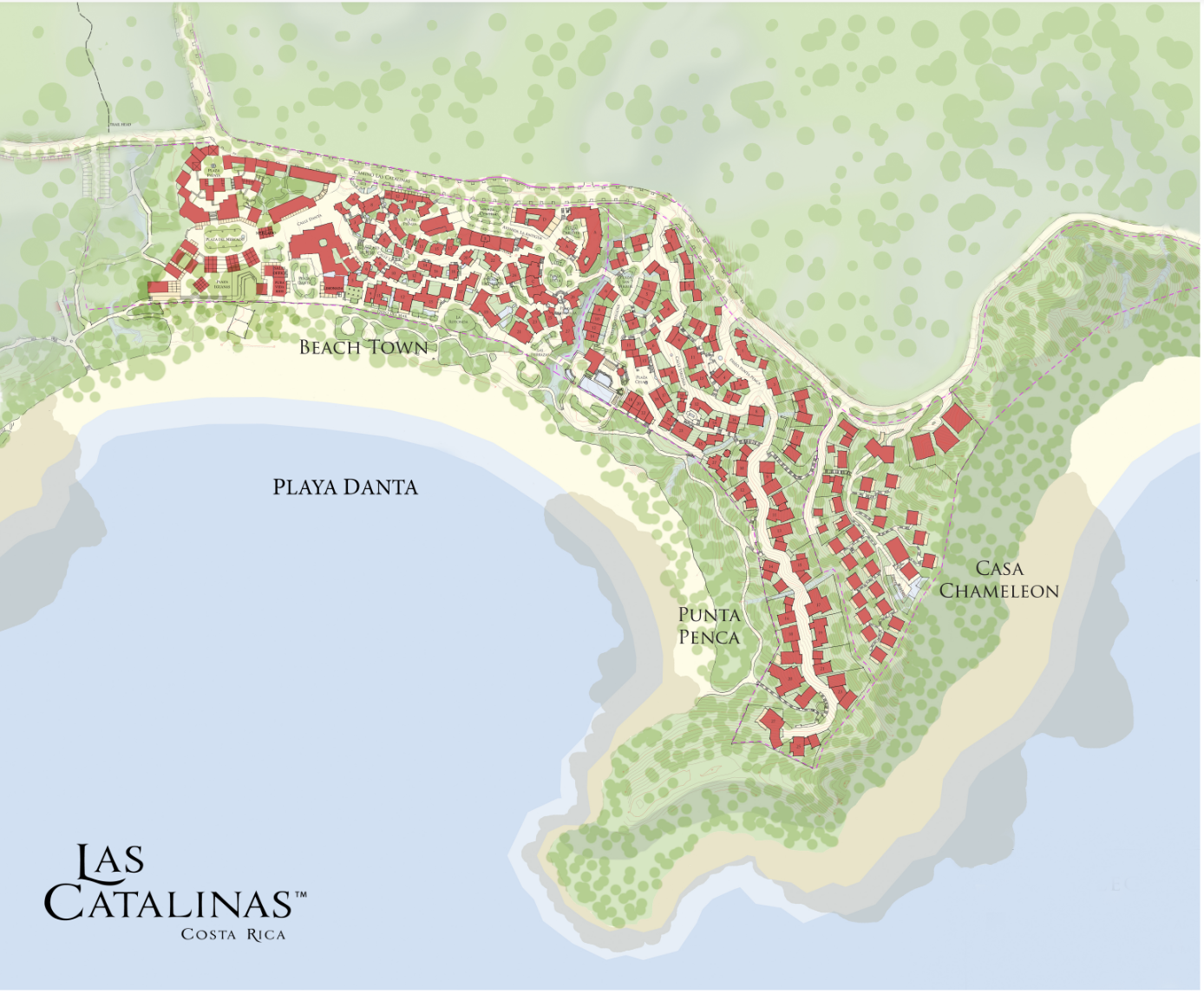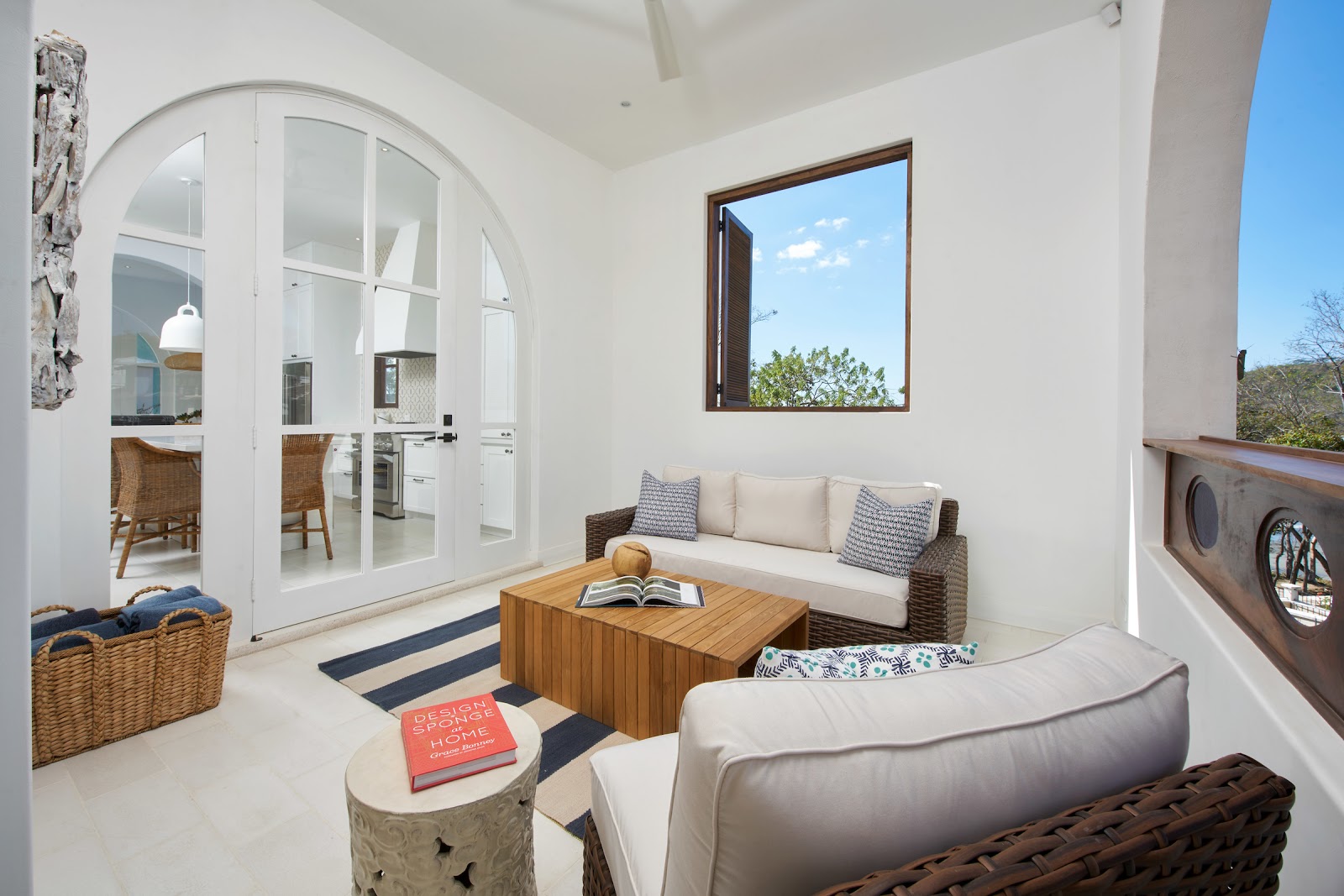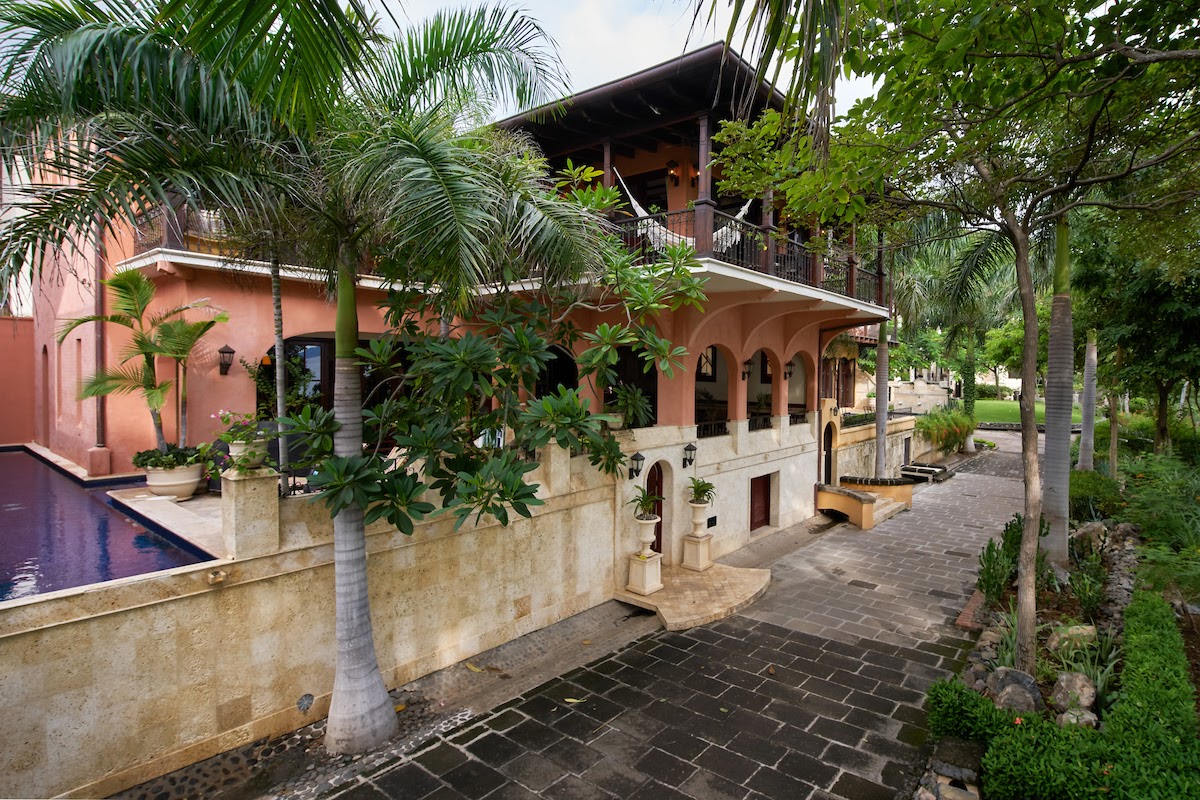Generative Urbanism in Las Catalinas
January 28, 2020
Historically, urban plans have ranged along a spectrum from organic to inorganic designs.
Organic designs are typically less formally structured, can feel more natural to live in, are more responsive to existing topography, and grow over time in response to the needs of a town. Data driven town planning provides a more formal, cohesive structure to a town from the beginning, usually on a grid or other structured pattern, and often grow in line with specific purposes, to facilitate industry, efficiency of movement or supply chain, or other goals.
Las Catalinas is an example of a new form of urban planning that blends these two methods to create a town that feels natural, but not random, and is intelligently and effectively built without sacrificing spontaneity and beauty.
Generative Urbanism, An Algorithmic Town Plan
This new form of urban planning is called generative urbanism, and is a form of algorithmic town planning. Starting from scratch, the landscape of an area serves as a platform upon which the rest of the town will grow. Next are the guiding principles for the town, the key factors that will be prioritized in all homes and buildings. In Las Catalinas, these three ‘rules’ are the prioritization of walkability, views, and privacy.
With the landscape of an area set, and the rules guiding design, the generative process is then used to draft a town plan.
The first step is to lay out the initial few homes and buildings, which serve as the ‘seed’ upon which the rest of the town will grow. The layout of this first round, the topography, and the guiding principles of the town then influence the layout of the surrounding homes and buildings, which form another layer of the town.

The initial homes of Paseo del Mar served as the 'seed' for the generative plan in Las Catalinas
It is in this way that the urban plan is generative. The topography of the area and the initial ‘seed’ designs are organic elements created by nature and individual creativity. Then, upon this organic base, three simple rules can inform the layout and plan of an entire organically generated town that still follows a cohesive set of principles. After the second layer, a third is added, taking into account the designs that came before. A fourth is similar, taking into account the first three layers, and so on with each step building upon its generated predecessors.
This is not an automated process, and instead requires thoughtful design by town planners to ensure that key principles are followed throughout. However, this manual design also leaves room for individual inspiration, adaptability, and creativity within the generative plan.
Using generative urbanism, towns are created in a way that responds to the land, feels entirely unique, and adapts to the needs of its people as it grows, but also follows a set of consistent, repeatable principles. When these principles align with the town’s architectural tradition, the town feels cohesive, well-designed, and beautiful, as well as spontaneous, and intriguing.
The Three Principles Guiding Las Catalinas Town Design
Each of town’s three guiding principles are interconnected, and the places where all three are prominent are where Las Catalinas feels most vibrant and satisfying to live in.
Prioritization of Walkability
The first principle chosen for Las Catalinas was to prioritize walkability, and the physical design of town has responded perhaps most tangibly to this principle. It’s because of the prioritization of walkability that town has a dense urban design, bringing people, nature, shops, and services closer together.
One example of how this principle can be seen in the layout of town is through the design of town’s streets. Rather than long view corridors that do not change, the streets of town operate at angles and curves, which draw the eye around each corner and bring changing views with each step. The addition of colorful homes, squares, plazas, and doors that are “gifts to the street” all add to this element of walkability, rewarding the pedestrian for each step.

The streets of Las Catalinas wind along the existing topography, creating a different sense of place with each corner and curve that rewards pedestrians as they move along the street
Prioritization of Views
The urban density brought about by the walkability of Las Catalinas, as well as the beauty both natural and manmade that would take shape in the town, led to the second priority in town’s generated urban plan, the prioritization of views. Out of every home, square, plaza, and road there is at least one interesting view, be that of town, mountain, or ocean, which contributes to the overall beauty of town.
One of the best ways that this principle can be seen in town’s layout is the spacing of the homes across the land. From above, town generally follows a checkerboarded layout, where homes and view corridors roughly alternate out to maintain views for each home.

Each home and building in Las Catalinas is designed to maximize the available views, a principle made easier by town's hillside nature
Prioritization of Privacy
Another response to the walkability and urban density of town is the need to consider privacy. A place where pedestrians stroll along the streets and neighbors live physically close together means that it’s important to consider sight lines not just towards views, but also between homes and the street. When privacy isn’t properly considered, like when there are sight lines from public spaces into personal spaces, both the passerby and person in the home can feel uncomfortable. However, an excessive amount of privacy can feel like seclusion, so there must be a balance.
Town’s checkerboard layout, as well as the arrangement of homes to help avoid windows looking directly into other windows, are major contributors to privacy throughout town. Much of this principle relies on the home’s architecture as well -- all principles rely on thoughtful design to make use of town’s layout, but of the three principles privacy is perhaps most reliant on home design. For example, the chest-high walls in Casa Blanca’s terrace overlooking Plaza Celaje provides the ability to both people watch and sit in privacy, all in the same space.

Casa Blanca's Plaza Celaje-facing terrrace is an example of how privacy can be enhanced by home design
The Homes of Paseo Del Mar | How the Principles Come Together
One of the many examples of how these principles come together is in the homes of Paseo del Mar, whose 1.5m elevation off of the street creates a balance of privacy, views, and walkability for both residents and passersby. For the resident, this medium elevation provides a view over the street towards the ocean and privacy for pools, open-air dining rooms and living rooms, but also offers the ability to chat with passersby and take advantage of the friendly walkable street. For the pedestrian, there’s no feeling of intruding on others’ privacy, which in turn makes a stroll along this walkable beachfront street with views of ocean more enjoyable.

The walls in Casa Teja provide the home with privacy on the inside, but also allow residents to lean over the pool or terrace walls to interact with the street
Explore Town’s Generative Urbanism
As one of the pioneers of generative urbanism, Las Catalinas is a physical and tangible example of how topography, an initial ‘seed’, and core guiding principles can create an organic town that has a cohesive and orderly design. On a walk around town, each of these aspects come to life in different ways, creating the colorful and diverse urban fabric of town.
